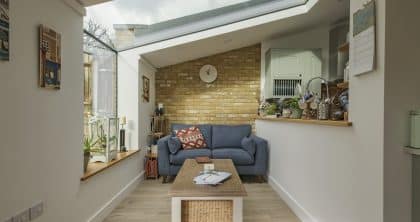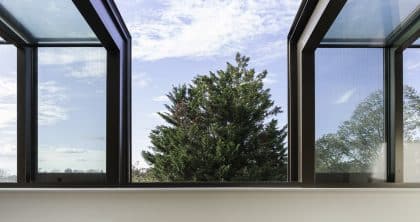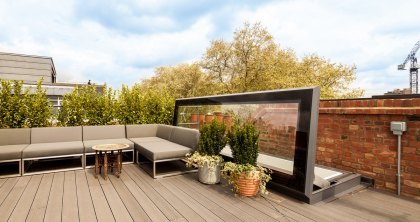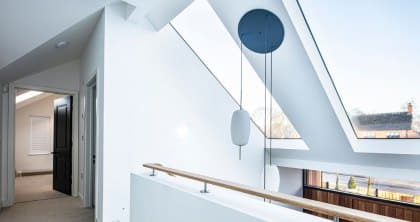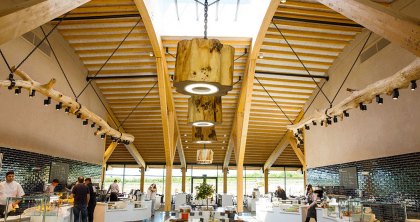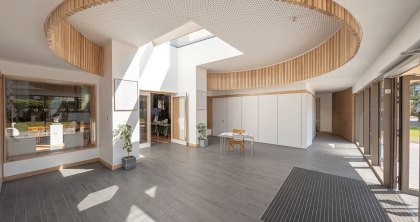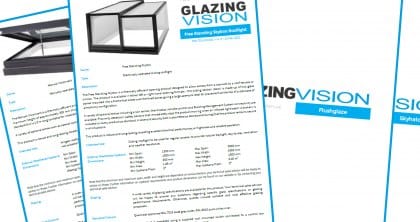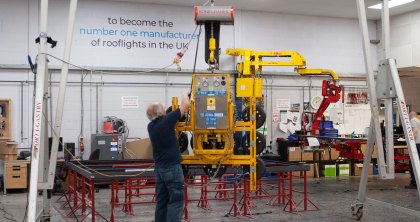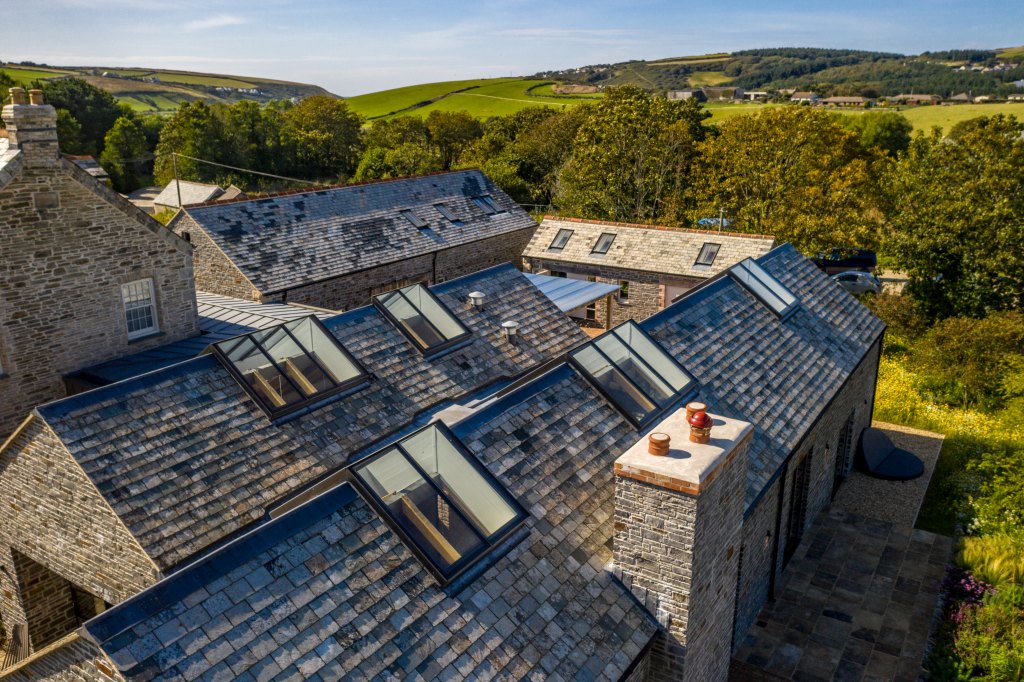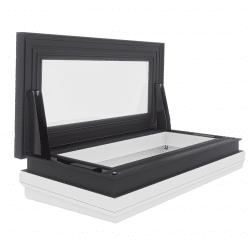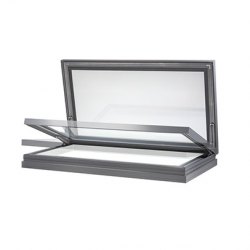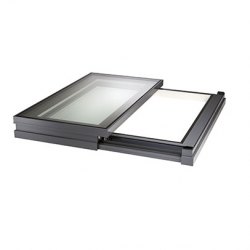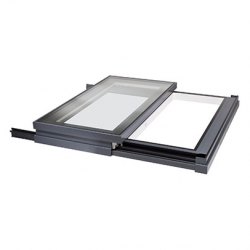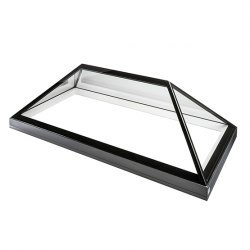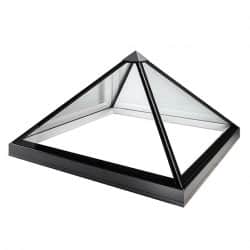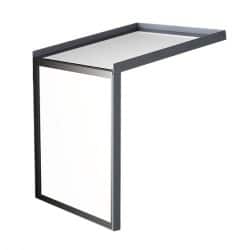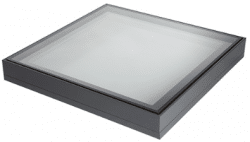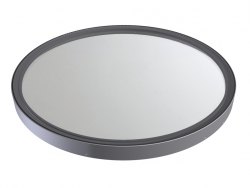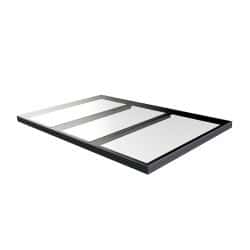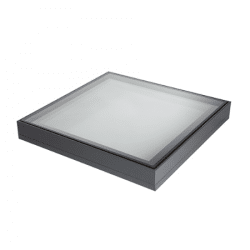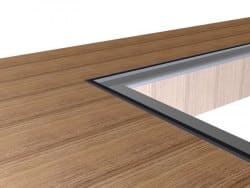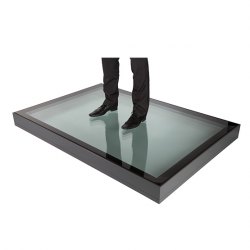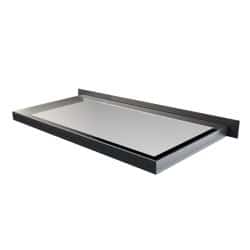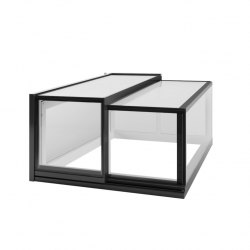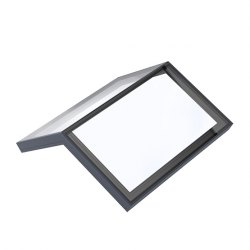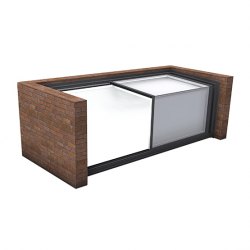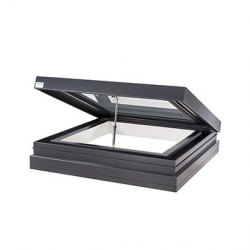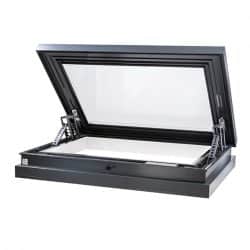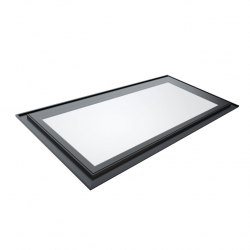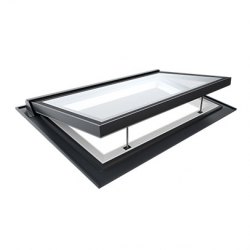Posted on December 13, 2021 in Blog
We all have a predilection to well lit, inviting spaces, so increasing the use of glazing products in the built environment is almost always an efficient way of improving an internal space.
But what is the difference between these glazing products: is a skylight window different to a rooflight, or a rooflight different to a roof window?
There are plenty of benefits to bringing natural light into a building – from boosting occupants’ wellbeing, through to saving energy. Roof windows, rooflights and skylights are all popular options for letting the sunshine in and improving the look and feel of an internal area, but what’s the difference between these products – and how do you know which one is the right choice for your project?
Is it a roof window, rooflight or skylight?
It’s fair to say that the terminology used to describe glazed units in roofs can be a bit tricky to understand – so don’t worry if you’re not sure what the difference is between roof windows, rooflights and skylights. It’s also fairly common to see terminology being used inconsistently, which increases confusion. Let’s take a look at each product type to help clear things up.
What are roof windows?
These are probably the easiest to define because they are covered under BS EN 14351-1:2010. The standard stipulates that roof windows must be installed in the same orientation and ‘in plane’ with the surrounding roof, typically at a minimum 15° pitch. Once installed, they should be weatherproofed using a skirt or flashing.
Roof windows must be UKCA marked before they can be sold and manufacturers are expected to provide a declaration of performance (DOP) to advise specifiers how each unit performs under test conditions. Typically, this will cover things such as tests to simulate prolonged and heavy rainfall, how the roof window withstands increased air pressure, glass deflection and monitoring any air leakage to ensure the product does not create drafts or allow in damp.
Roof windows are usually only available in standardised shapes and sizes and are typically smaller than rooflights. However, new products have recently become available using improved glass specifications that allow much larger sizes to be manufactured.
Glazing Vision offer two types of UKCA marked roof windows. Our Pitchglaze units are fixed roof windows, that can be installed in roof pitches between 15° and 60° and offer completely frameless internal views, such as in this private residence in Milton Keynes. Pitchvent is a top hinged ventilation roof window available as either a manually operated unit or powered by chain actuators hidden within the frame. Both of these products can be manufactured in sizes up to 3m2 (measured to internal aperture) offering huge increased in natural daylight and ventilation.
What are rooflights?
‘Rooflight’ is a generic term that can sometimes mean different things. Typically, the term refers to a glazed unit installed on a flat roof, or where installed on a pitched roof it is likely to be fitted ‘out of plane’ with the level of the tiling.
Rooflights are commonly installed using an upstand or kerb system to support the actual product and act as a surface for any weathering to be fixed to; on flat roof systems the upstand will provide enough height to ensure that the rooflight remains watertight. The rooflight quite often has to be installed at a certain height to maintain any guarantees supplied by suppliers of weatherproofing systems.
Rooflights come in a huge range of designs and styles, and as well as providing natural light, they’re also often used for ventilation or access. Options include frameless fixed rooflights, which offer a minimal appearance and sky-only views, as well as hinged rooflights, sliding rooflights, fire rated and AOV rooflights, pyramid and lantern rooflights, and box rooflights, which are often used to provide access to roof terraces. We also offer a bespoke service where we can design and create any rooflight you have in mind.
What are skylights?
Skylights is another generic term, and it’s often used by manufacturers for a variety of different products, ranging from small-scale domestic units installed on traditional pitched roofs to larger bespoke glazed units designed to be installed on flat roofs or terraces.
Skylight is a generic term that can sometimes confuse consumers, since the products it refers to may differ quite drastically in terms of size, scale, function and application. In some cases, the use of the term skylight is actually completely inaccurate as far as the Building Regulations are concerned, where more appropriate terms should be used that are recognised in British Standards.
Specification considerations: advantages and disadvantages
In most cases, choosing between a roof window or rooflight (or skylight) is easy: if it’s going on a pitched roof, you’ll want a roof window; and it will be rooflights for flat roofs. However, there are other issues to think about.
Off-the-shelf design vs customised
Roof windows are very popular and widely used having been adopted by all major national house builders. They are robust, reliable and offer value for money. The advantage of standardised sizes and specifications means that they are usually available to buy ‘off the shelf’. The disadvantage of this is their flexibility – particularly when it comes to scale. If you’re looking for larger sections of glazing on your roof then roof windows presently only offer a limited amount of scope.
Rooflights (or skylights) tend to be offered in a much wider range of shapes, sizes, specification and function. However, they tend to be more expensive than roof windows due to their bespoke nature, and since they are usually built to order, there will be a lead time of several weeks.
External appearance
Rooflights and roof windows are both available in frameless designs, which means you only see glass when looking up at the unit from indoors. However, these products look quite different from the outside. Since roof windows are designed to sit flush with the plane of the roof, they offer aesthetically pleasing clean lines, which rooflights sometimes struggle to match.
That said, rooflight manufacturers are beginning to respond to client demands for the flexibility and scale of a rooflight, but with a low external profile that can be installed flush with roof tiling lines in the same way that a roof window can. For example, Glazing Vision’s Pitchglaze and Pitchvent rooflights have been designed to eliminate much of the visual clutter on the outside of the building, resulting in a clean and modern appearance.
Access
You may want to open up your entire roof with glass that retracts, or be able to walk on the glass safely if installed in a terrace. Need access to that terrace? Hinged access or box rooflights can provide a suitable means of egress.
To find out more about Glazing Vision’s range of roof windows, skylight windows and rooflights get in touch or take a look at our case studies. You can also phone our technical team to discuss your project in more detail.

